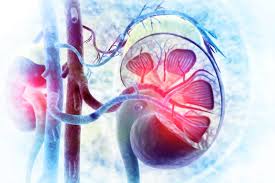Right Now
A Look at Life After Transplants: The Sirolimus Revolution
The landscape of organ transplantation has undergone a profound transformation in recent years, with advancements in immunosuppressive therapy revolutionising post-transplant care. At the forefront of this revolution stands sirolimus, a potent immunosuppressant that offers a paradigm shift in the management of transplant recipients. This article explores the transformative impact of sirolimus on life after transplants, shedding light on its efficacy and implications for individuals of all ages navigating the complexities of post-transplant immunosuppression.
Understanding Sirolimus:
Sirolimus, also known as rapamycin, belongs to a class of immunosuppressive agents known as mammalian targets of rapamycin (mTOR) inhibitors. Unlike traditional calcineurin inhibitors such as cyclosporine and tacrolimus, sirolimus exerts its immunosuppressive effects by inhibiting the mTOR pathway, thereby suppressing T-cell activation and proliferation.
Key Benefits of Sirolimus:
- Renal-Sparing Effects: Sirolimus offers a compelling advantage over traditional calcineurin inhibitors by virtue of its renal-sparing effects. Unlike cyclosporine and tacrolimus, which are associated with nephrotoxicity and renal dysfunction, sirolimus preserves renal function and may even promote renal regeneration in transplant recipients.
- Antiproliferative Properties: Sirolimus exhibits potent antiproliferative properties, making it particularly advantageous in the context of transplant vasculopathy and chronic allograft dysfunction. By inhibiting smooth muscle cell proliferation and neointimal hyperplasia, sirolimus mitigates the risk of graft rejection and prolongs allograft survival.
- Lower Incidence of Post-Transplant Malignancies: Emerging evidence suggests that sirolimus may confer a lower incidence of post-transplant malignancies compared to calcineurin inhibitors. By virtue of its antiproliferative and antiangiogenic effects, sirolimus suppresses tumor growth and may reduce the risk of skin cancers and lymphoproliferative disorders in transplant recipients.
- Improved Lipid Profile: Sirolimus is associated with a more favourable lipid profile compared to calcineurin inhibitors, with lower rates of hyperlipidemia and dyslipidemia. This metabolic advantage reduces the risk of cardiovascular complications and contributes to overall cardiovascular health in transplant recipients.
In the aftermath of organ transplantation, the quest for effective immunosuppressive therapy takes precedence, shaping not just graft outcomes but also overall quality of life for transplant recipients. Amidst the myriad of options, sirolimus emerges as a beacon of hope, offering a multifaceted approach to post-transplant immunosuppression that transcends age and clinical complexity.
Imagine a scenario where the spectre of graft rejection looms large, casting a shadow over the prospects of long-term transplant success. In such moments of uncertainty, sirolimus presents itself as a formidable ally, capable of preserving graft function and ensuring allograft survival in the face of immunological challenges. Its unique mechanism of action and renal-sparing effects make it an appealing choice for transplant recipients seeking optimal graft outcomes and long-term transplant viability.
Moreover, buying Sirolimus 1mg online to mitigate the risk of post-transplant malignancies and improve cardiovascular health underscores its relevance beyond mere immunosuppression. By addressing the multifactorial sequelae of transplantation, sirolimus empowers transplant recipients to embrace life after transplantation with confidence and resilience.
In conclusion, the sirolimus revolution heralds a new era in post-transplant care, offering a transformative approach to immunosuppression that transcends the confines of traditional therapy. As we navigate the complexities of life after transplantation, let us not overlook the potential of sirolimus to safeguard graft integrity, promote longevity, and enhance overall well-being. Whether embarking on the journey of transplantation or striving for optimal outcomes in the aftermath of transplant surgery, sirolimus beckons as a beacon of hope, offering a path towards a brighter, healthier future.
More Posts




onlinegenericmedicine
-
400 Elmwood Avenue, Apt. 218, Buffalo, NY 14222, United States
buffalo, new york 14222
United States - 9177810616
Report This Post
Please complete the following requested information to flag this post and report abuse, or offensive content. Your report will be reviewed within 24 hours. We will take appropriate action as described in Findit terms of use.


















